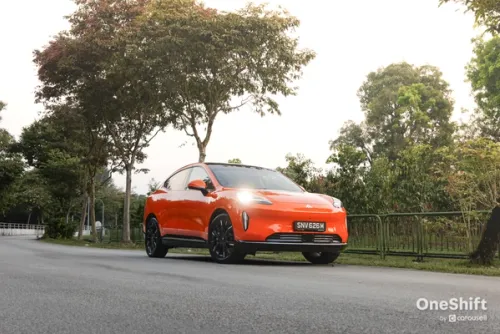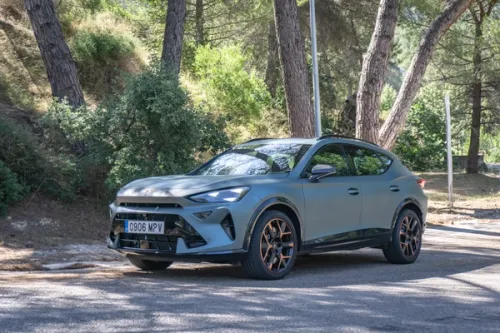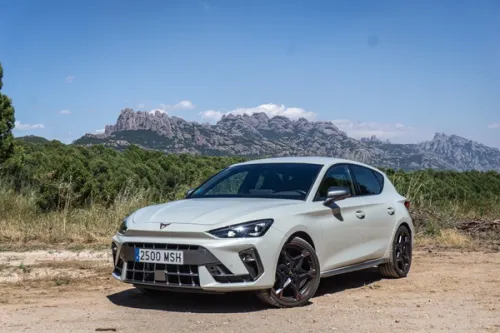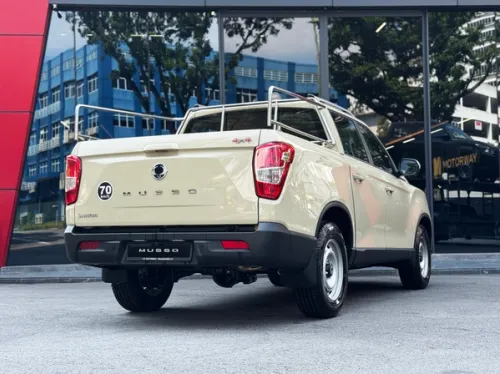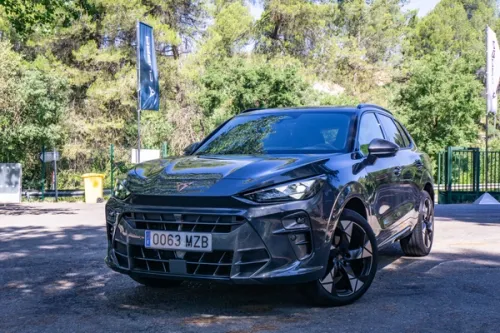Jag Out Of The Bag
There is a new look for the F-Pace... but can Jaguar's revised SUV match the competition?


Since its debut in 2016, the Jaguar F-Pace has gone on to become Jaguar’s best selling model in Singapore, accounting for approximately 40% of Jaguar’s sales here. This is in part due to coupe-SUVs enjoying a meteoric rise in popularity, and in part due to the F-Pace being, quite simply, a beautiful looking car. While the 2021 version retains the use of Jaguar's 2.0 Ingenium power plant, the car has undergone some cosmetic enhancements on the exterior, and more significant upgrades to its interior. In doing so, the new car presents noticeable elevation to its overall package and value proposition. I’m not sure what the younger generation thinks of the Jaguar brand, but I was relatively surprised to discover that the brand still retains significant clout among the older generation.
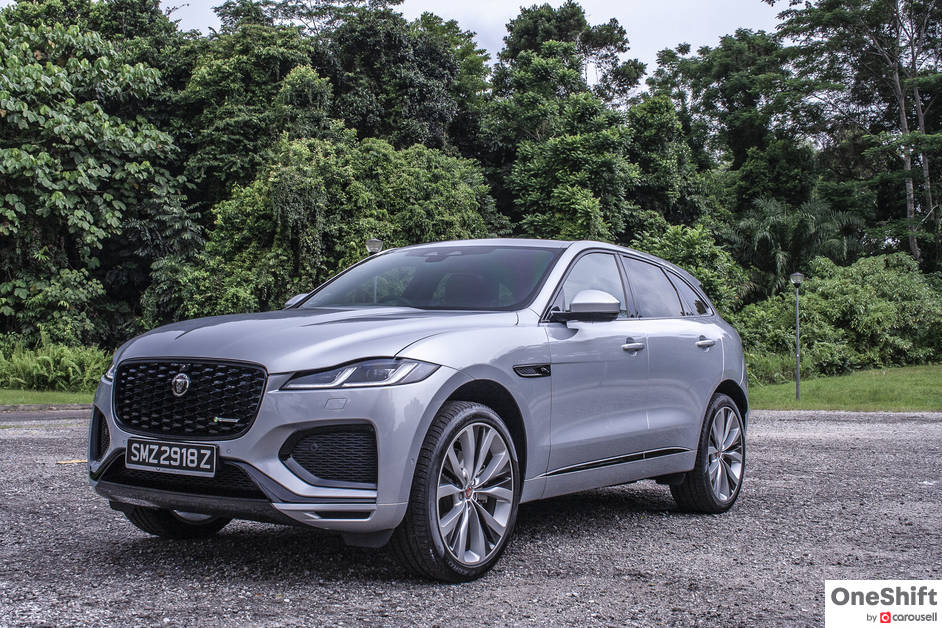
Modern SUVs are all about the looks these days, with each of the marquee brands coughing up coupe versions of more conservative standard models. Factually, these coupe versions don’t necessarily do anything for the performance of the car, but they do an excellent job at looking prettier and being more expensive. On the flip side of things, the F-Pace is a bit of a gem in this area. You see, unlike its competitors, Jaguar’s F-Pace isn't a coupe version of another car. It is its own car, and one that already looks every bit the part it's supposed to play as the drop dead gorgeous, sporty, dynamic, and premium looking SUV it is supposed to be. In that sense, there is an argument to be made that the F-Pace actually sits closer in comparison to an X4 or a GLC Coupe as opposed to an X3 or GLC. If you subscribe to that notion, then the F-Pace suddenly feels like extremely good value for money. In fact, I would argue that visually, the F-Pace sits on a higher echelon of cars, and easily looks like a $300,000 car, making its list price of $264,999 seem like a pretty good bargain.
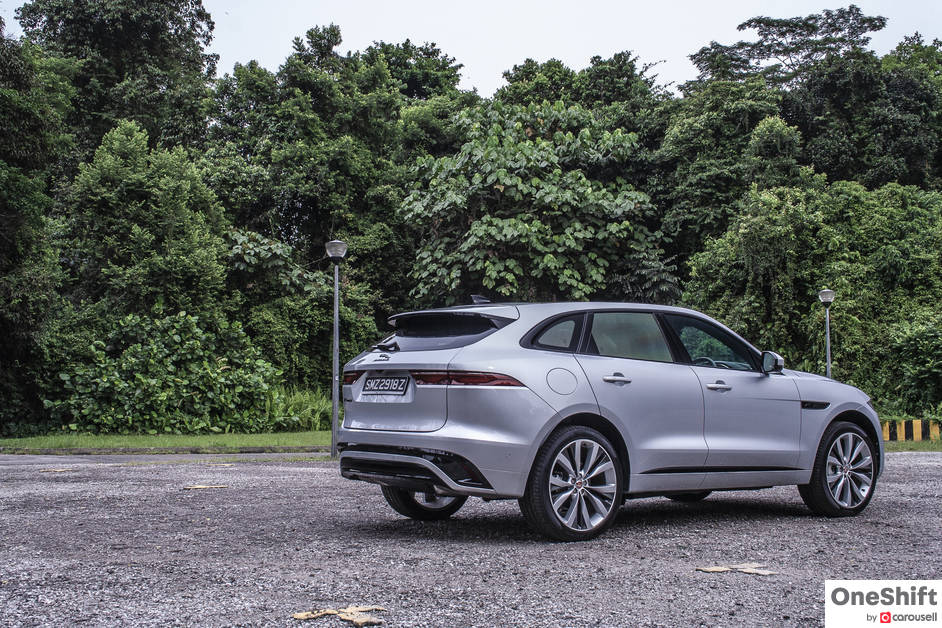
Frankly, not much needs to be said about the design of the F-Pace. In my opinion, it's hard to fault the way this car looks. The previous version was pretty, and the new one is prettier thanks to a few key upgrades. For starters, the bonnet panel has undergone a redesign, such that the shut line is in alignment and seamless with the grille and lights, giving the car a more refined feel. The previous version’s shut line ended some way before the nose of the car, giving it a slightly disjointed look. Another key upgrade are the all new front and rear LED lights which feature the double ‘J’ signature daytime running lights, as well as redesigned rear lights. Jaguar has also tucked the exhaust pipes behind the rear bumper, giving the car a sleek, almost electric-car vibe. Overall, the cosmetic upgrades have elevated the visual appeal of the F-Pace, though I must admit that the previous car looked a little bit more muscular and a little bit more “badass”, and for some strange reason, the latter appeals to me. I’d still have the facelifted version for sure, but there is something about the cleaned up aesthetics that looks a little more “suit and tie” and less “bad boy”.
Interior upgrades to the F-Pace are probably where the changes in the updated car will be most significantly felt. Headlining this, will no doubt be the completely redesigned dashboard, which features the new 11.4” Pivi Pro curved touchscreen infotainment unit first seen on the Land Rover Defender, with whom the F-Pace shares a good deal of its architecture with. It must be said that the new infotainment system is significantly better than the previous version in almost every way imaginable. For starters, it does not seem to have the tendency to hang, like in the old car. The aesthetics are beautiful to look at, and the chosen colour scheme and layout does set itself apart from the bulk of infotainment systems on the market. Perhaps a victim of its own success in this area, the infotainment consequently isn’t the most intuitive on the market, perhaps because we are too used to operating systems that are built a certain way across other makes and models. There are certain menus that can be a little puzzling to get through, but this is something that any driver should be able to get used to over time. Thus, not a big issue. The driver’s instrument cluster has also been fully digitised to keep parity with the times.
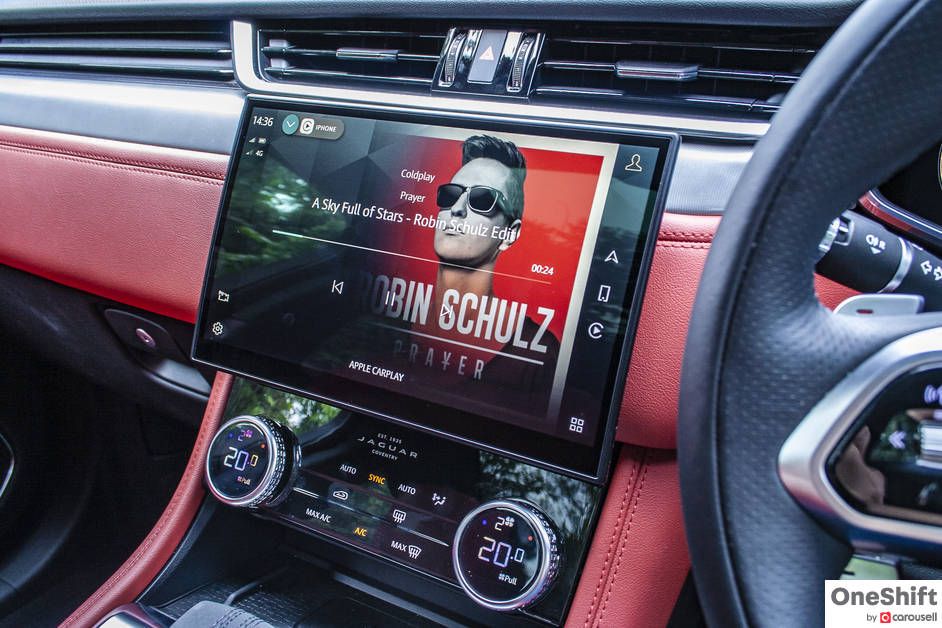
The use of leather in the cabin is liberal and the resulting effect is an air of opulence in the F-Pace. Adding a premium touch are jaguar logos on the door plates, and the embossed “leaper” logo on the front seats. If you were to simply sit in the driver’s seat, you would immediately get the sense that the interior feels more luxurious than its main competitors. I would refrain from saying that it is a better cabin than its competitors, but I definitely think that it looks more luxurious and more opulent than its main competitors. Perhaps the red leather interior on the test car added some panache to the entire package, but even in the standard black, the F-Pace excels in this area.
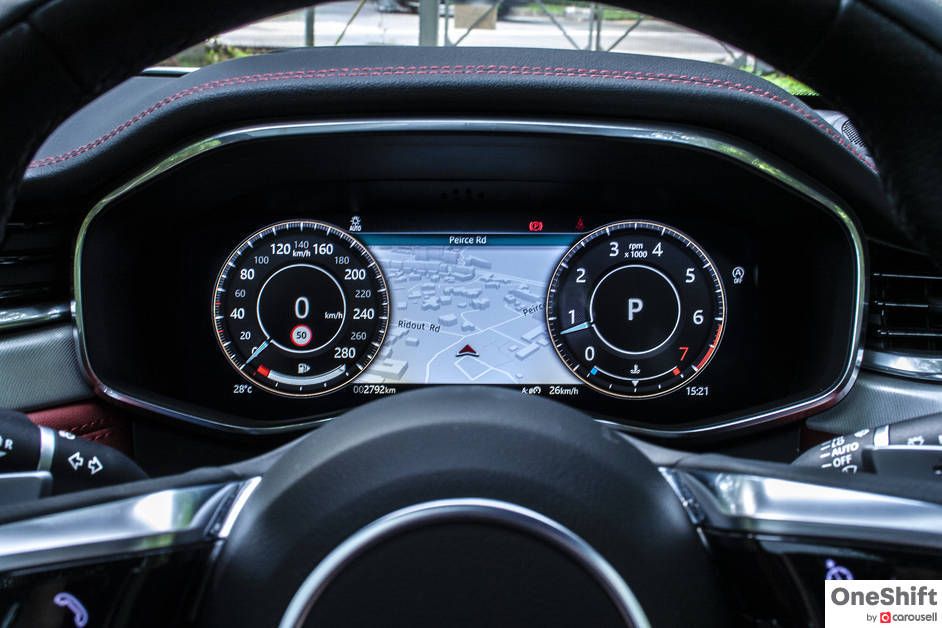
On the other hand, build quality could be better, with some cheap feeling plastics still finding their way into parts of the cabin, such as the lining panel of the instrument cluster, the “Park” button, and the sunglass holder up top. There is often this thing about British automobiles, where there are often a number of compromises in how their cars are built; sort of like it is almost a “must-have”.
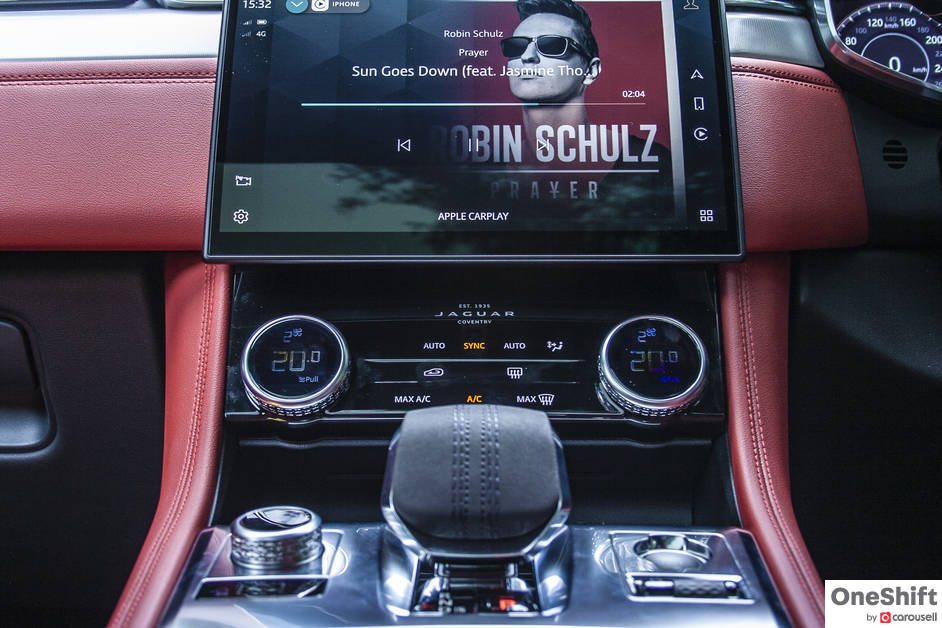
There are instances of glory with this cabin, such as with the excellent feeling and beautiful aluminium paddle shifters. It would also have been nice if this theme continued with other parts of the car, where the circular air conditioning dials and the gear selector trim were made in aluminium instead of plastic, as these are obvious touchpoints, and would have rounded off the user experience quite nicely. One thing I did like though, was the cricket-ball stitch pattern on the gear selector, which Jaguar tells me is an homage to British culture.
The F-Pace is a mixed and quirky bag here - not in an obviously flawed or bad way, but perhaps in a way where the car doesn’t always seem to be ergonomically optimised. In terms of passenger and cargo carrying abilities, there is not much to fault. The absence of a sloping roofline means that the headroom in the rear is actually very decent, and the boot is big, squarish, and without a load lip. However, the car does have some quirks that you’d have to learn to live with. One good example is that the F-Pace features a wireless charging pad up front, while Apple Carplay and Android Auto are only available via USB cable connection through ports in the centre storage compartment under the armrest. Thus, if I wanted to use Apple Carplay while still having direct access to my phone in the wireless charging compartment, I would have to run the USB cable across the entire length of the cup holders and across the gear selector in order to do so - seems a little bit strange to me. Most car makers would just live with the redundancy of having two charging options by providing a USB port up front as well. This theme continues throughout much of the cabin, and while rather annoying at first, became much more bearable over time. One thing I did find a little hard to live with though, was that the rear doors are way too thick, and under standard shopping mall car park conditions, can be a little bit difficult getting in and out of, even for my petite sized wife. This is something that makes me think that I probably won’t enjoy raising toddlers with this car - Loading them into their car seats would be an absolute nightmare.
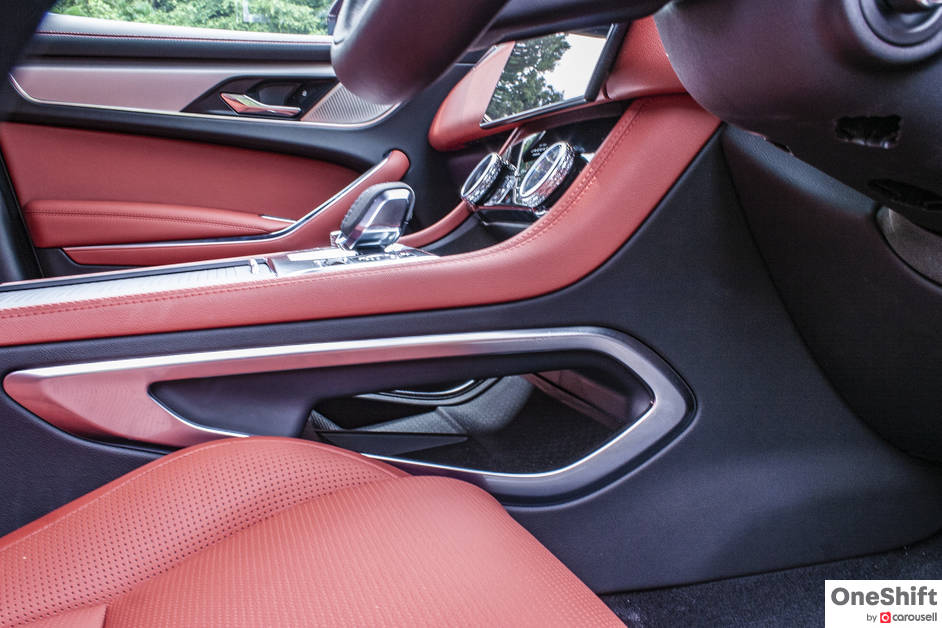
Overall, I’ll say that the F-Pace has its ergonomic challenges and not everything feels like it has been thought through as much as you’d expect from a premium luxury vehicle. Also, while these practicality issues may be evident to you as the car’s owner, your friends, colleagues, and relatives will be none the wiser. One thing that I did find pretty useful, was the optional Jaguar Activity Key, which is basically a full fledged car key in the form of a fitbit-looking wristwatch that is waterproof for up to 30m. This allows you to go running, biking, or swimming without having to worry about the key jingling about in your shorts as you run, or where to hide it on the beach when you swim.

On the road, the F-Pace feels like a beast. From the driver’s seat, it does feel like you are towering over the road, and the muscular haunches of the car does make it feel like you are thundering down the road channeling the vibes of a monster truck. The downside here is that the F-Pace does feel larger than it is, and learning to keep in lane with this car took me a tad longer than usual. Parking isn’t the easiest, as the door panels are extremely thick, making it hard to really have eyes over the car’s physical limits. Thank goodness the F-Pace has a pretty nifty 3D camera that more than makes up for the lack of visibility. Performance wise, the 2.0 turbocharged power plant does a good job, getting the F-Pace’s 1,832kg kerb weight across the century sprint in a respectable 6.6 seconds. The engine note is pleasant even when pushed, and doesn’t sound like it is throwing a fit, unlike a certain particular german marquee. The down side though, is that during low speed runs in town traffic, the engine and transmission can produce quite a lumpy experience.
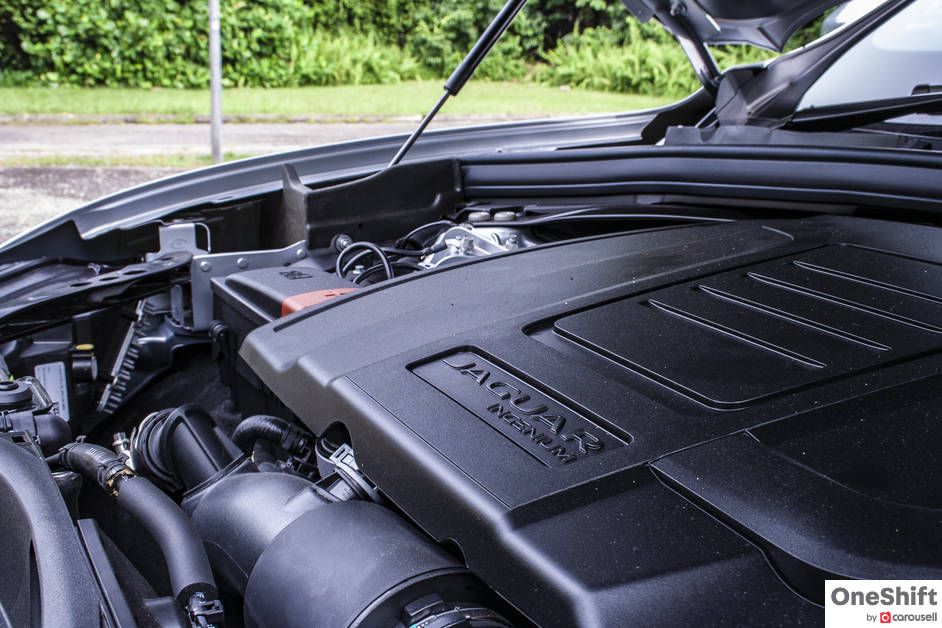
On the handling front, the F-Pace keeps its aluminium construction roots, helping the car stay quite light and nimble, with the car presenting very positive dynamics in the grip and handling department. Our test car was fitted with 22 inch tyres which looked absolutely gorgeous, but the large wheels significantly compromises ride quality at low speeds. I expect though, the car should ride quite beautifully on the stock 19 inch wheels that come on the standard specification F-Pace. Remember guys, more sidewall is better here.
The braking balance of the F-Pace is excellent, and is extremely comfortable even under harsh braking, and the Jaguar SUV does not dive. Overall, the car does its best work when it's up at speed and does not entirely feel like it enjoys being puttered around at start-stop speeds. I must admit though, that the car feels slower than it's specified to be, and I'm not entirely sure the all wheel drive system does the car many favours in terms of day to day driveability, or is even necessary in Singapore’s relatively tame driving environment. Perhaps a more affordable and simpler rear-wheel drive version of the car would be sufficient; somewhat like the base BMW X3.

I’ll be honest. There were moments that I hated the little quirks of the car. However, its opulence grew on me, and after a while, I found myself actually feeling a little bit sad to return this charming SUV.
What I’ve realised about the F-Pace is that while it sits in the same esteemed company as the BMW X3, Mercedes-Benz GLC, and Audi Q5, the F-Pace is nothing like those cars, and does not try to be. It does not possess the same ergonomically sound checklist that governs each line, nook, and cranny as compared to the German makes, and does not seem to need nor want to abide by the same standards.
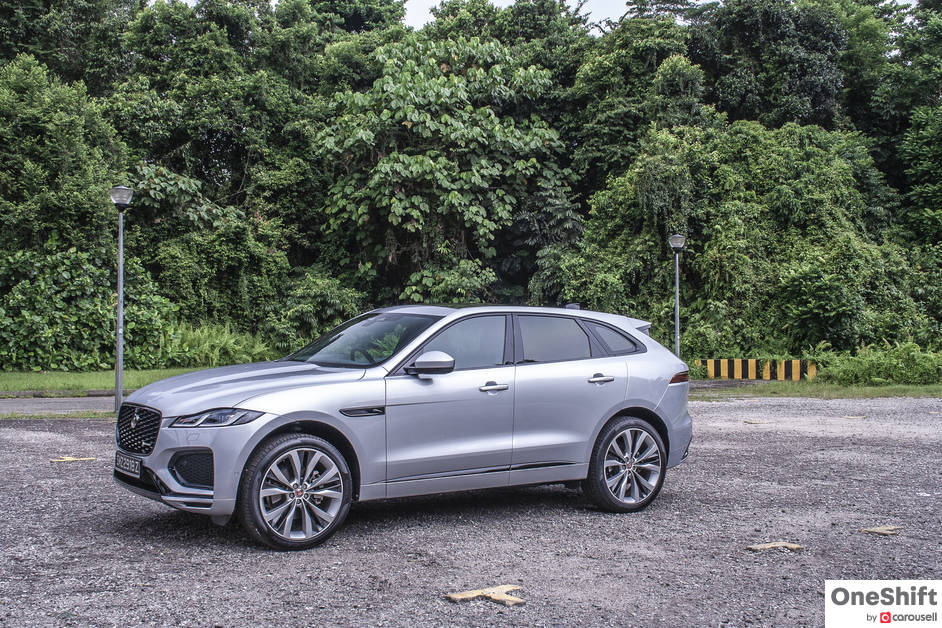
To put it plainly, the F-Pace is no basic b*tch, and there is a flamboyant quality about this Jag that makes it feel more special, more snobbish, more classy and more premium than its competitors - and it demands an owner to match. Like a Wes Anderson film, the F-Pace does not conform or subscribe to the set standards, and in some instances, can even seem downright crazy. It is mediocre for the most part, but presents a moment of brilliance out of the blue. On most days, I’d likely purchase one of the German-made SUVs for they present a more level headed acquisition - But every now and then, like everyone else, I’d have a tendency to feel a little bit more daring, and perhaps a little bit more passionate. It is on such a day, that despite the supposed flaws of the F-Pace, I might just decide I want one.
Credits: Words and Photos by David foo








Get the Best Price for your used car
from 500+ dealers in 24 hours

- Convenient and Hassle-Free
- Consumer Protection
Transparent Process
With No Obligation

